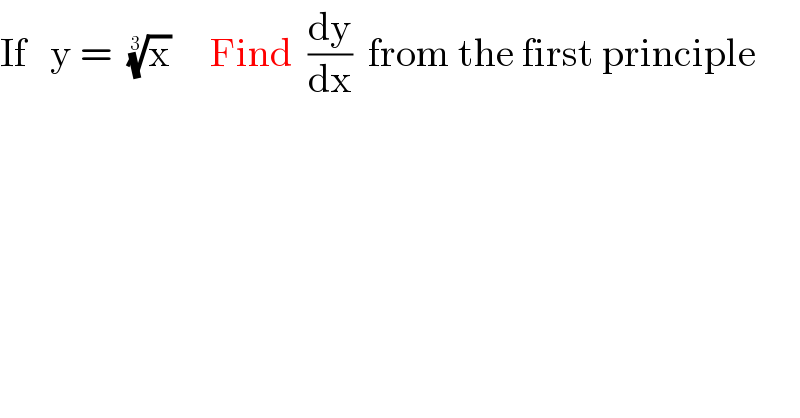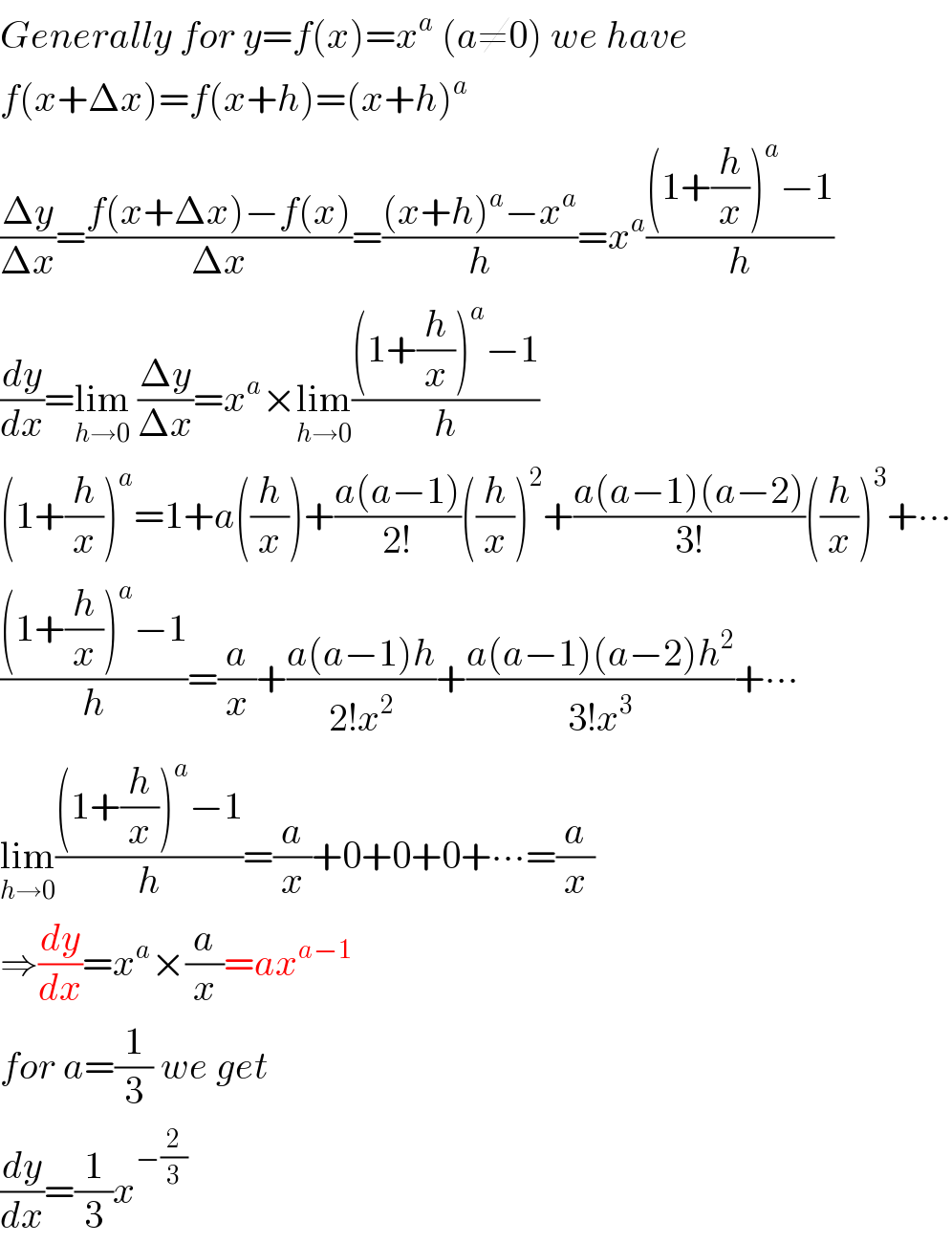
Question and Answers Forum
Question Number 13068 by tawa tawa last updated on 13/May/17

Answered by ajfour last updated on 13/May/17

Commented by tawa tawa last updated on 13/May/17

Commented by Nayon last updated on 23/May/17

Answered by mrW1 last updated on 13/May/17

Commented by ajfour last updated on 13/May/17

Commented by tawa tawa last updated on 13/May/17

